Niagara Falls is a splendid and mind-blowing wonder. It once earned the reputation of being the honeymoon capital of the world since its late 1880s grandeur. It is located in Canada. This natural wonder draws millions of visitors annually. It has numerous activities to enjoy, from wineries to water parks, theme parks to boat tours! It has beautiful landscapes, photographic places, diverse wildlife and historic landmarks. It sure is a showstopper.
13 Important Facts about the Niagara Falls
1. Niagara Falls is the World’s Speediest Waterfall
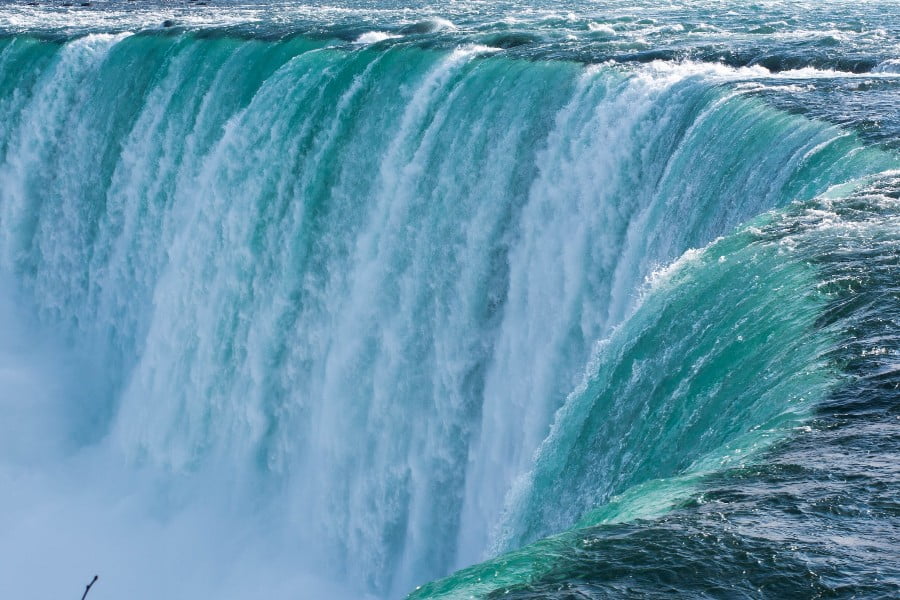
Approximately 700,000 gallons of water cascades down Niagara Falls every second at a speed of 100 miles per hour! This makes the Niagara Falls the world’s fastest-moving waterfall. It is also the most powerful waterfall in the world having the highest flow rate.
There are multiple theories around its formation. But it is agreed upon that it was formed during the ice age from glaciers more than 12,000 years ago. Enormous chunks broke off North American continent into Lake Erie, leaving great cracks which were filled up. It now stands 188 feet tall with a depth of 170 feet. The greatest height of the vertical drop is over 165 feet (50 metres). A massive amount of two million litres or about 600k gallons water flows through Niagara Falls every day.
2. Adventurous Walks Over Niagara Falls
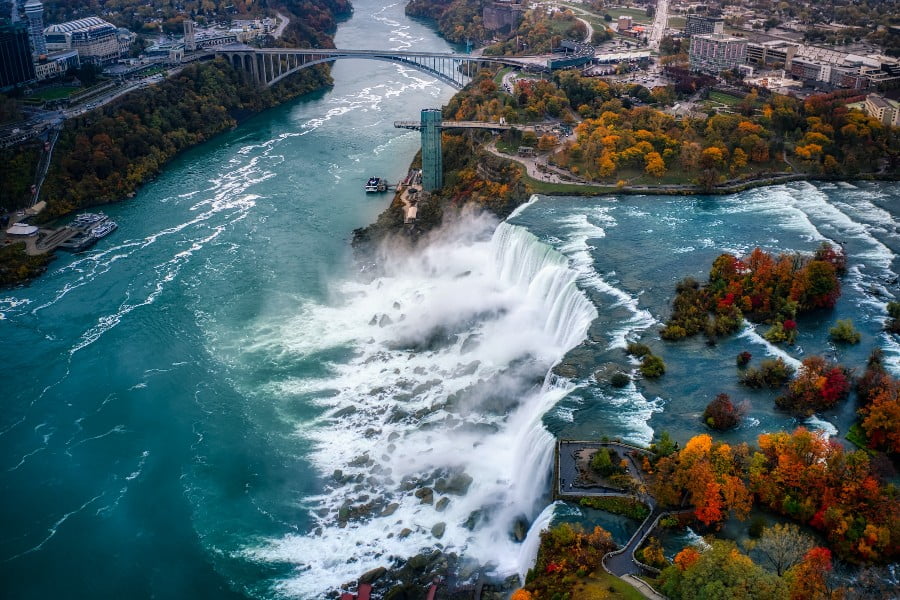
Charles Blondin is known to be the first person ever to walk over the falls. He successfully performed the daring tightrope walk across Niagara Falls while wearing pink tights in 1859. He achieved the feat of crossing Niagara Falls several times afterwards.
Nik Wallenda was the first daredevil in 116 years to tightrope walk over Niagara Falls in 2012. He performed this adventurous act in the presence of a live audience of tens of thousands and also had his journey broadcasted on live T.V.—making it available to millions of more people around the world. He did so after taking permission from both the governments of Canada and United States, although he was required to carry his passport and present it on entry to the Canadian side of the falls. It is illegal by law and not very smart to go over the Niagara Falls. A number of people have tried it nevertheless, some survived, some were injured and some were killed.
3. Three Waterfalls Together Constitute Niagara Falls

Niagara Falls is actually a collection of three waterfalls at the southern point of Niagara Gorge. It is located between the Ontario province in Canada and the state of New York in US. The Bridal Veil Falls which look like a bride’s veil are the smallest. The American Falls is the middle one. The Horseshoe Falls which are also called Canadian Falls, are larger than the other two. These falls lie on the border between Canada and the United States. Niagara River that drains from four Great Lakes — Lake Superior, Lake Michigan, Lake Huron, and Erie is the origin of all these falls. They merge into one gigantic waterfall going into Lake Ontario.
4. Niagara Falls is a Major Source of Hydropower for Both Countries
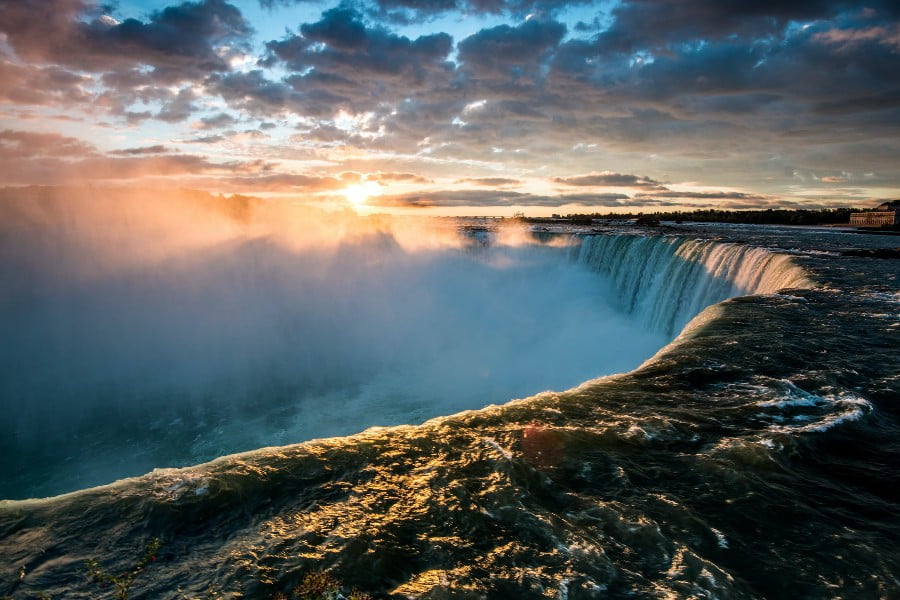
Niagara Falls is a remarkable resource of hydropower. The first hydroelectric power plant was constructed in 1881 on the Niagara River. It facilitated the generation of electricity for adjoining cities like Buffalo, New York City, Toronto (Ontario), Rochester (New York), and others throughout Canada. This colossal waterfall has the potential to provide ample energy. The combined force of all the falls is capable of generating 1/4th of the amount of electricity required for the entire New York state and Canadian province Ontario.
There are numerous hydroelectricity plants in the vicinity of Niagara Falls supplying electricity for both the US and Canada. Niagara Falls is capable of supplying nearly 4.9 million kilowatts of electricity, sufficient to power as many as 3.8 million homes.
The water used for hydropower generation is reduced during the summer as there are a greater number of tourists coming to see Niagara Falls and travellers can relish a magnificent flow. However, at night, hydroelectric stations in the area divert more water to generate more potential energy.
5. Historical Places at Niagara Falls Canada

Niagara Falls is not only a spectacular natural phenomenon but it was a witness to some fascinating historical events. The Old Fort Niagara has preserved an ancient American flag which is an antique from the War of 1812. The British forces captured it during that war and it is displayed in the fort. Another landmark stands on the Erie Canal and is called ‘Flight of Five Locks’. It was a device for lifting and lowering boats built in 1815 and is still functioning today on Erie Canal in Lockport, providing the maximum lift in the minimum distance on all U.S.-built canals.
The Village of Lewiston is an important exhibit of local American heritage and culture. It is the place where the first battle of the War of 1812 happened and was the final stop for the Underground Railroad. It was a network of secret escape routes for captured slaves.
6. Niagara Falls is Relatively Young
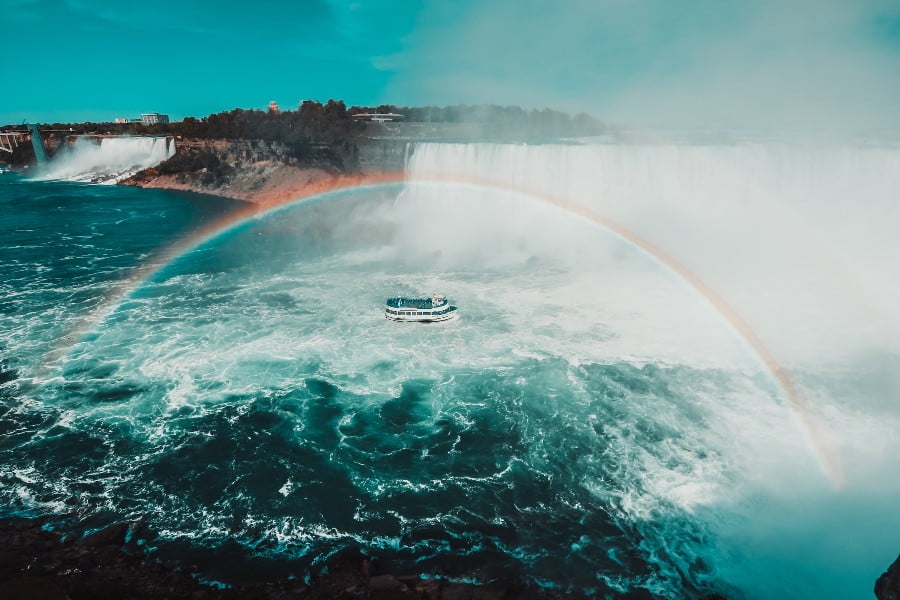
Niagara Falls is approximately 12,000 years old. But in terms of geological history, that’s quite young. Considering other locations that are more than 60 million years old, Niagara Falls is an infant in eco terms.
The first reference of Niagara falls had come from an account by Samuel de Champlain in 1604. It was likely a story told by natives that he encountered on his travels. French explorer Louis Hennepin documented the falls in 1678 which is officially the first time, and since then, it has featured as one of North America’s most marvellous natural wonders.
7. Niagara Falls Accounts for 20% of Drinking Water for America

Niagara Falls provides almost one-fifth of drinking water in the United States. The adjacent Great Lakes contain 84 % of North America’s total surface fresh water and supply nearly 21 % of the total supply of surface fresh water in the world. Despite its beauty and benefits, it is only advisable to avoid drinking water directly from Niagara Falls because it may include microorganisms or parasites unfit for consumption. It needs to be purified properly before drinking.
8. Niagara Falls State Park is the First State Park in the U.S.
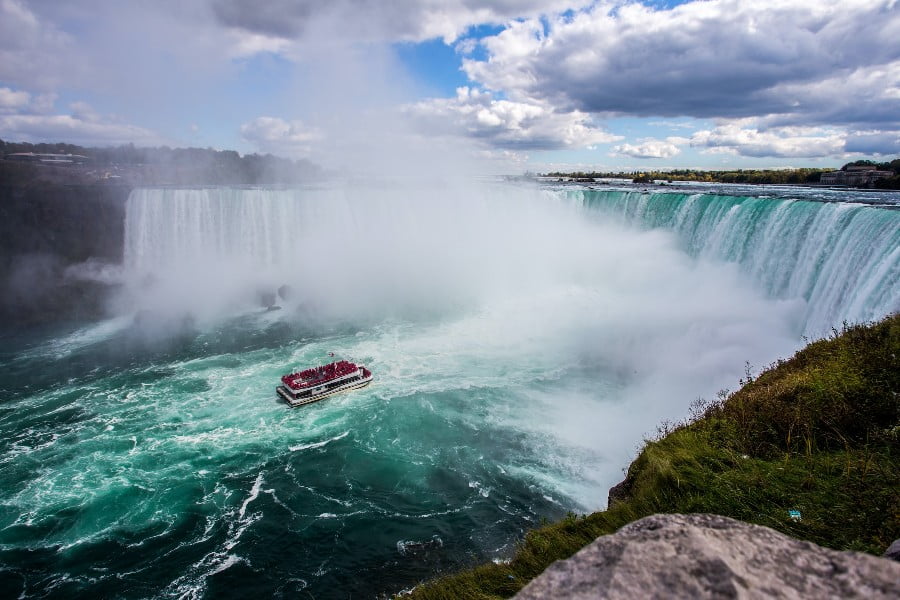
The oldest state park in the U.S. was established in 1885 at the Niagara Reservation in New York. Every year, over 8 million tourists visit the Niagara Falls State Park. The Niagara Falls Association was founded in 1883 by a group of citizens to protect the natural environment and prevent damage to the natural ecosystem. This association did the crucial task of acquiring private land around the area to preserve its natural beauty for the future generations.
9. The Daredevil Drop Down the Falls
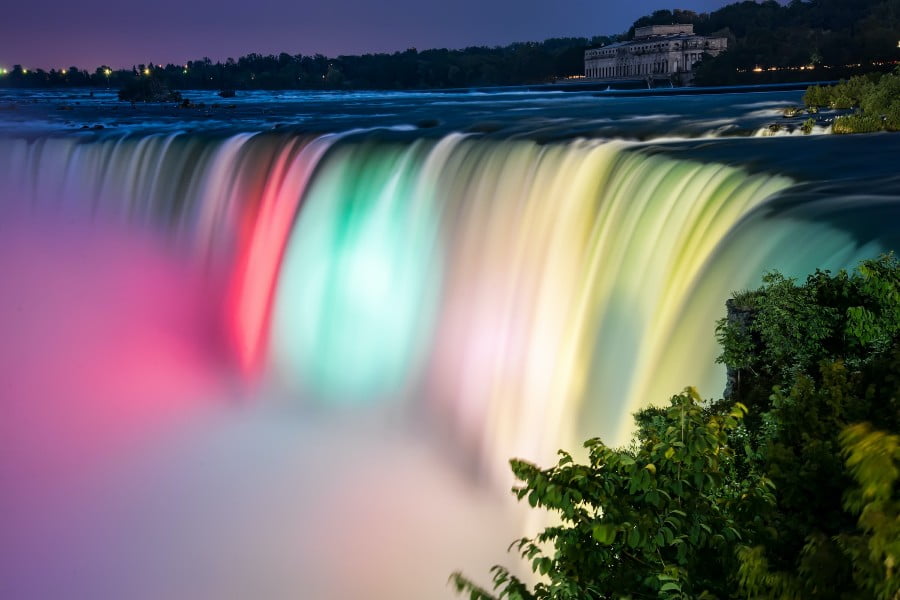
Niagara Falls has always fascinated many daring souls. In the fall of 1829, American Sam Patch leapt down Horseshoe Falls, dropping 175 feet into the Niagara River. Patch was popular as the Yankee Leaper. He became the first man to make the plunge and survived.
Annie Edson Taylor was a 63-year-old teacher who became the first person ever to take this adventurous trip down the gushing waters of Niagara Falls in 1901. She fashioned a barrel made of iron and oak and padded it with a mattress to protect her from the impact of falling. Her act was successful and she survived. But it is not allowed to attempt such a daredevil stunt for clear safety reasons, and those who do attempt a fall over Niagara Falls are charged with a hefty fine and must pay for cost of rescue. After Taylor, more than a dozen other people have attempted this feat.
10. Fishes Can Survive over Niagara Falls
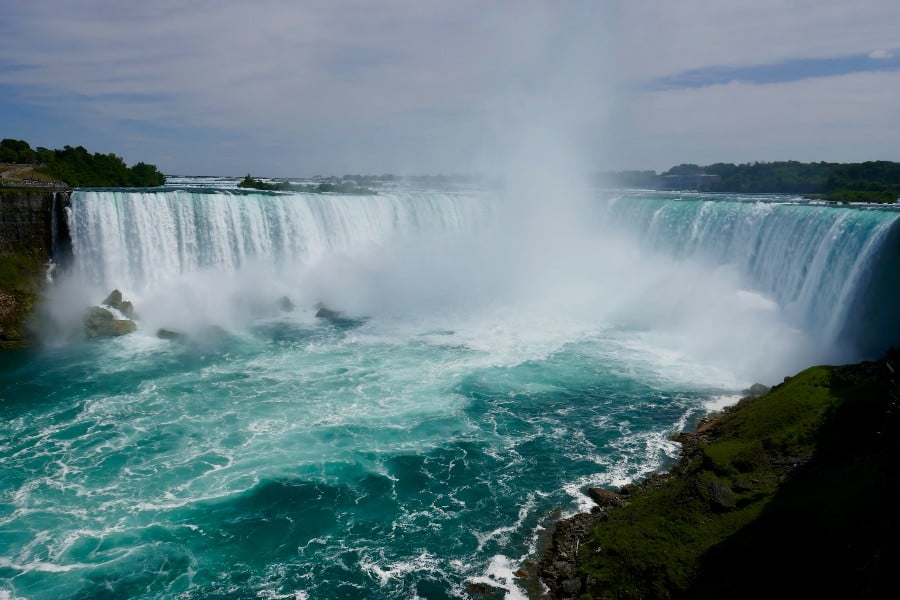
Despite the tremendous force of the pouring water, the fish in Niagara Falls have evolved to withstand the strong pressure from the falls. About 90 percent of the fish who are carried down Niagara Falls survive because of the white foam. This protective foam cushions the fish that happen to swim down the Falls. Their bodies are also designed in a manner that helps them to survive the steep drop. Niagara Falls State Park is made of more than 400 acres of land having diverse landscape. It houses many wildlife creatures like wintering gull, ducks and waterfowl species.
11. Shared Boundaries
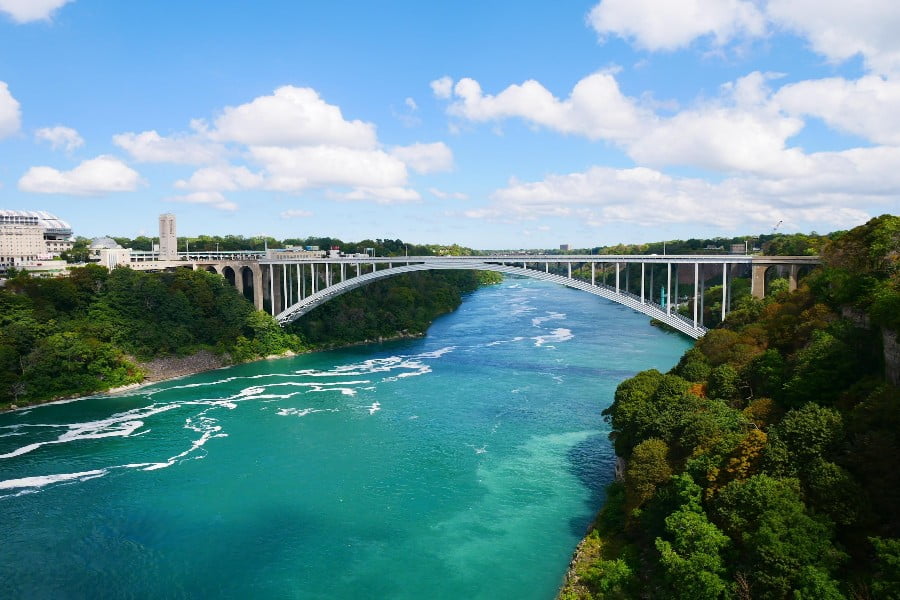
The Niagara Falls lie on the border of Ontario, Canada and New York, USA. Although it is located between the United States and Canada, Niagara Falls is not officially “owned” by any country. There is a mutually agreed imaginary boundary that is present on the North American map. The boundary splits the three waterfalls between the two countries. Horseshoe Falls situates on the Canadian side while American and Bridal Falls are within the American border.
12. A Popular Tourist Destination

The Niagara Falls have always been a popular destination attracting tourists. It is an iconic scene featuring in a number of movies. It is also acclaimed due to a daring performance by famous Illusionist David Copperfield in 1990. Goat Island is situated in the centre of the Niagara Falls, between Horseshoe Falls and Bridal Veil Falls. A monument devoted to Serbian-American inventor Nikola Tesla is built on Goat Island. The Niagara Falls are visited by approximately 30 million people every year.
13. Geological Facts
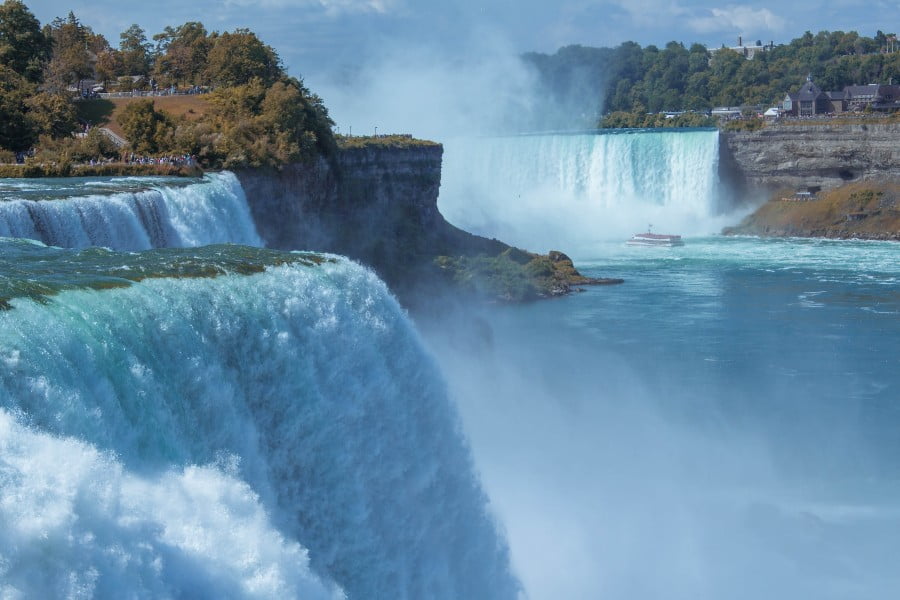
At the current rate of erosion, scientists estimate that the Niagara Falls will probably disappear in around 50000 years but there is still time to cherish them. Niagara Falls drains the waters of the Great Lakes and is said to be about 12,000 years old. The Five Great Lakes provide the waters to the Falls – Huron, St. Clair, Superior, Michigan, and Erie. The water then flows down the waterfalls into the 6th Great Lake – Lake Ontario.
Contrary to the common belief, the waterfalls are not static. The water can move or change its path. Niagara Falls itself is assessed to have moved back by 7 miles during the last 12,500 years. Niagara Falls could possibly be the world’s fastest-moving waterfall. The water travels down from the Great Lakes, to its ultimate destination in the Atlantic Ocean for about 15 hours. The water that sustains Niagara Falls come from various sources such as rain, hail, snow, and groundwater. Apart from this, this water also contains fossil water, which dates back to the last ice age.
Niagara Falls is, without a doubt, one of the most spectacular places in the world. It boasts of many special attractions like a massive waterfall, and three waterfalls that make up two canals. It also nestles an island between them with an amusement park on it! It is a natural phenomenon that continues to intrigue us rendering us speechless at its magnificence.
Read also – 24 Facts about the Eiffel Tower